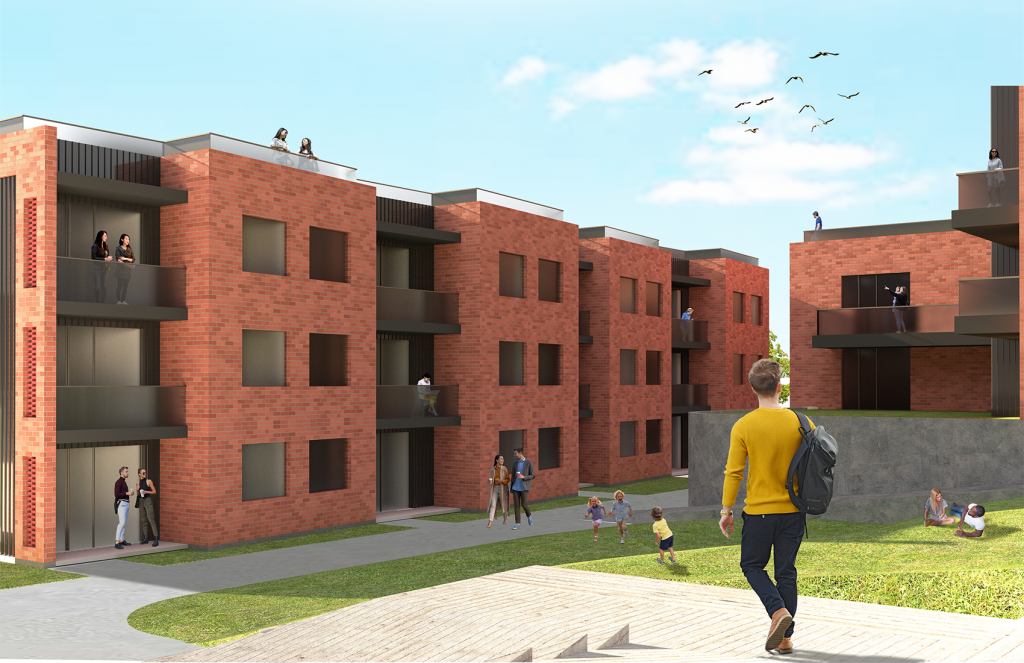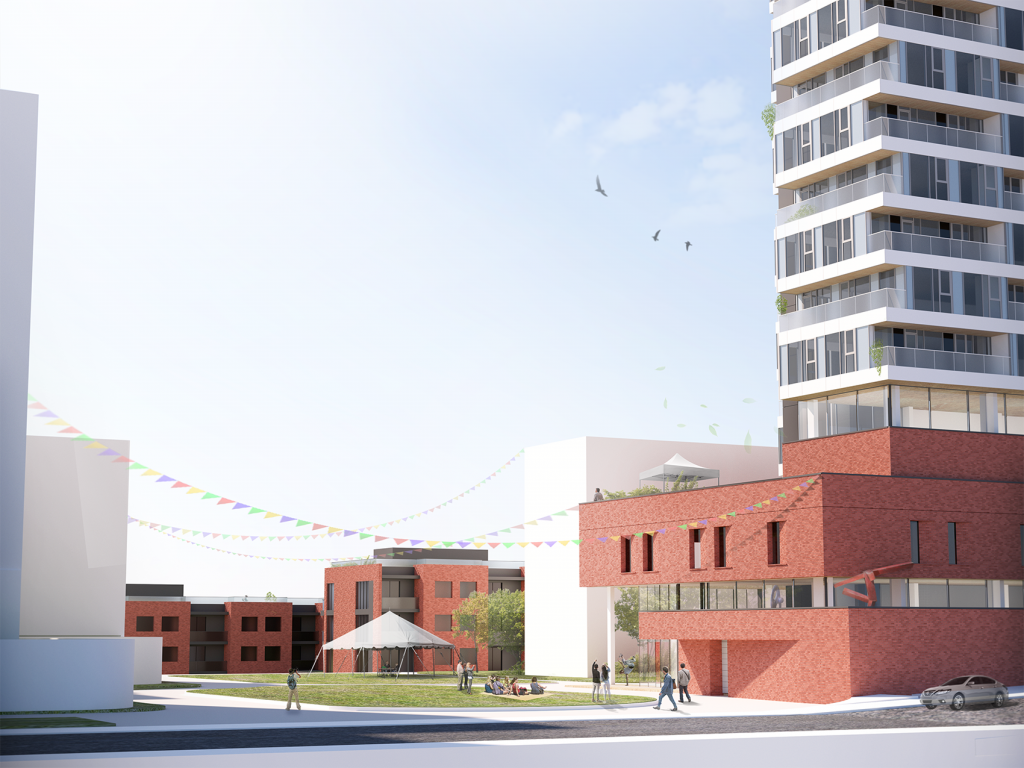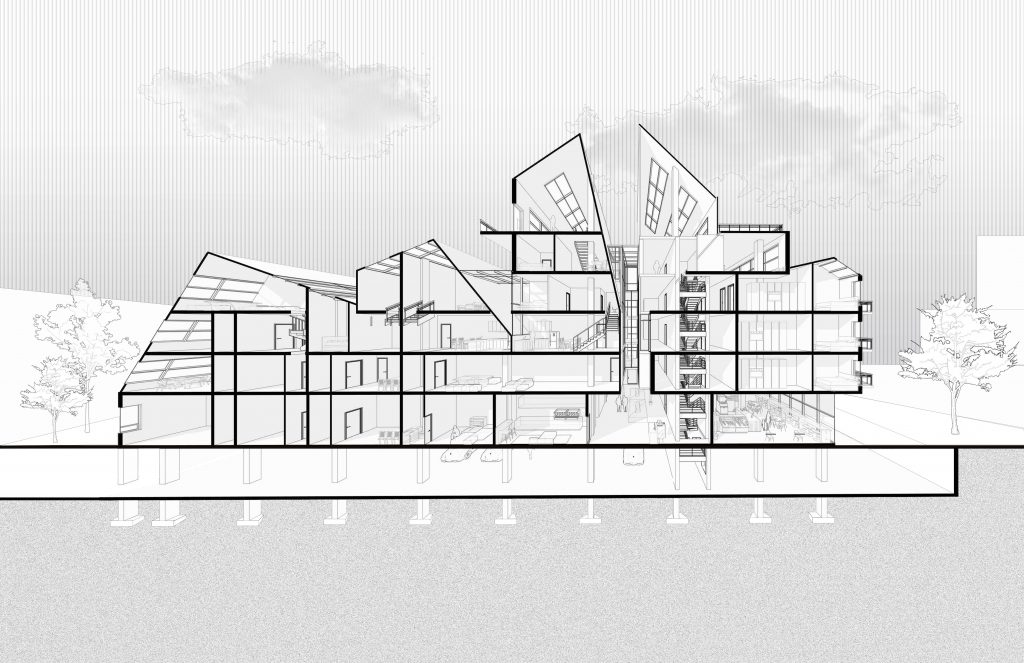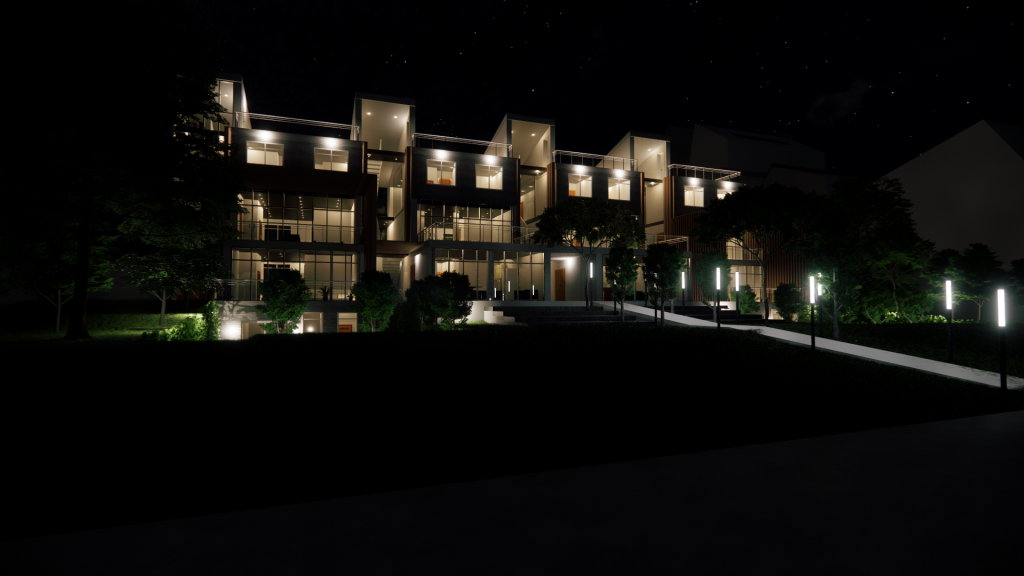Winners of the 2022 Federation of Chinese CPEF Award in Architecture
April 19, 2022
The Federation of Chinese CPEF Award in Architecture is an annual $1,500 award that goes to one or more outstanding students in the fourth year of the Bachelor of Architectural Studies degree.
Eligible students have completed the fall semester housing studio and demonstrated design excellence in their project, with particular attention to the social and cultural aspects of building.
“We are extremely grateful to the Federation of Chinese Professionals for its ongoing support of the next generation of architects,” said studio coordinator Associate Professor Benjamin Gianni.
“As housing is such a crucial issue in Canada and around the world, we’re delighted that these prizes can be directed to this studio, in which students have the opportunity to explore the architect’s role in the production of housing and in the design of the urban and public realms.”
The studio explored the redevelopment of:
- Somerset St. (between the Plant Recreation Centre and the O-Train tracks,) with support from the City of Ottawa;
– The former bus station site on Catherine St., with sponsorship from Brigil;
– The corner of Innes and de Lamarche Roads in Orleans, in partnership with Groupe Lépine.
The 2022 prize recognizes two projects. Each receives $750.
Bright Parks by Will Hermer and Gerry Rafael-White is a residential project focusing on green space and community. The project is organized around a large green courtyard that acts as a central park space for every residential building on the site. The buildings are designed to be shifting blocks that create small green spaces between them, along with green roofs providing green space for residents on the upper floors. The site’s grade level is raised, allowing easy below-grade parking and access to Somerset Street. This grade access is primarily pedestrian to make Bright Parks a truly park-like environment.


Interconnected by Hager Abdelrahman and Reem Siage envisions three self-sufficient yet interconnected neighbourhoods; each centered around a community center called the “hub” and encompasses mid-rise apartment buildings and stacked towns. The project studies the connections and disconnections between these three neighbourhoods, as well as ways to promote the “urban heart” through commercial and community spaces along De LaMarche Road.


Proposal 1, by Reem Siage (above right), introduces a set of stacked towns that allows residents a fully privatized unit with direct access to the underground parking garage, as well as their private terraces. These units are located on raised topography to allow height and increased privacy from the surrounding mid-rise buildings. Maximized south-facing windows allow direct sunlight into spaces within the unit, dividing the south facade into curtain walls for communal living spaces and solid walls for private living spaces.
Proposal 2, by Hager Abdelrahman (above left), is a mid-rise, double-loaded corridor apartment building that holds a critical role in promoting the urban heart of the housing block. The massing strategy of the building aims to welcome people inwards towards the neighborhood. Undulating shapes and pitched roofs are created to explore the possibility of more than one window orientation for typical apartments — within a double-loaded corridor building — along with an interesting play of light through interior and exterior.
The six professors and instructors who taught the fourth-year comprehensive housing and city building studio selected the recipients. They were Piper Bernbaum, John Cook, Jelle de Roeck, Benjamin Gianni, Nicole Moyo, and Honorata Pienkowska.
“As coordinator of the studio, I’m thrilled that we have three sets of prizes available to recognize our students’ work,” said Gianni.
“The Pella and Chinese Professionals prizes differ from the Hobin Prize to the extent that they are juried by the instructors themselves, who look at all projects produced in the studio, not just a limited number of nominees,” he said.
“As we are looking at work from the ‘inside,’ we bring a different but complementary perspective to the choices we make.”